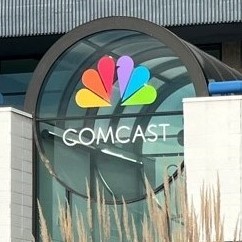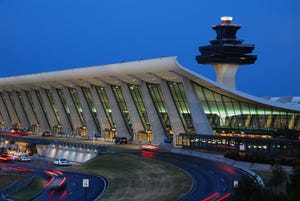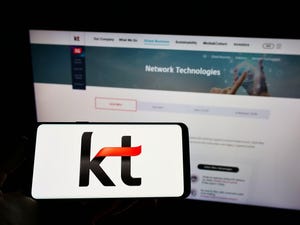A peek inside Comcast's new network
Comcast is rolling out multi-gig downstream services today, setting the stage for symmetrical multi-gig in late 2023. Here's a glance at the virtualized/distributed platform it's using to make it go.

DENVER – Comcast is using a virtualized cable modem termination (vCMTS) and a distributed access architecture (DAA) to underpin a wave of multi-gigabit downstream speeds and enhanced upstream speeds in dozens of markets before the end of 2022. That work will serve as a springboard for the deployment of a more advanced DOCSIS 4.0 network that will start to deliver symmetrical multi-gigabit services in late 2023.
In concert with Wednesday's launch of 2-Gig downstream speeds and faster upstream speeds in Denver, Comcast showed off some of its handiwork with city leaders and some media here at a headend that houses some of the new technologies that are making its new network go.
Currently based on DOCSIS 3.1, the access network that is delivering those new capabilities features a vCMTS paired with a distributed access architecture (DAA) powered by fiber nodes outfitted with remote PHY devices (RPDs). That will place PHY layer functions of traditional CMTS at the edge of the network and boost capacity by digitizing the HFC network all the way to the node.
Comcast is also boosting the DOCSIS upstream with a "mid-split" upgrade that expands the amount of spectrum dedicated to the upstream – from a legacy range of 5MHz-42MHz to a wider range of 5MHz-85MHz.
Below are some of the new technologies and products that are powering this wave of Comcast's network upgrade, along with a look at how they compare to some of the legacy tech:
Figure 1:  The entrance to Comcast's Denver headend, located within a stone's throw of Empower Field at Mile High, home to the horribly underachieving Denver Broncos.
The entrance to Comcast's Denver headend, located within a stone's throw of Empower Field at Mile High, home to the horribly underachieving Denver Broncos.
Click here for a larger version of this image.
(Source: Jeff Baumgartner/Light Reading)
Figure 2:  Comcast's power-saving vCMTS runs software on off-the-shelf Intel-based servers. The company estimates that the approach represents a 20:1 reduction in the number of cabinets required to deliver high-speed data when compared to legacy, purpose-built CMTS hardware. In September, Comcast estimated that it had deployed "many hundreds" of vCMTS 'pods.'
Comcast's power-saving vCMTS runs software on off-the-shelf Intel-based servers. The company estimates that the approach represents a 20:1 reduction in the number of cabinets required to deliver high-speed data when compared to legacy, purpose-built CMTS hardware. In September, Comcast estimated that it had deployed "many hundreds" of vCMTS 'pods.'
Click here for a larger version of this image.
(Source: Jeff Baumgartner/Light Reading)
Figure 3:  A closer view of a rack of servers powering Comcast's CMTS. The use of white cabinets vastly cuts down on lighting needs and overall power consumption requirements, the company says. Comcast expects to double the capacity of each server as it moves to the next generation of Intel-based hardware.
A closer view of a rack of servers powering Comcast's CMTS. The use of white cabinets vastly cuts down on lighting needs and overall power consumption requirements, the company says. Comcast expects to double the capacity of each server as it moves to the next generation of Intel-based hardware.
Click here for a larger version of this image.
(Source: Jeff Baumgartner/Light Reading)
Figure 6:  Comcast has on display a new digital fiber node (made by Harmonic) that's being deployed in the company's new distributed architecture. Comcast has deployed well north of 50,000 digital nodes for its upgraded network.
Comcast has on display a new digital fiber node (made by Harmonic) that's being deployed in the company's new distributed architecture. Comcast has deployed well north of 50,000 digital nodes for its upgraded network.
Click here for a larger version of this image.
(Source: Jeff Baumgartner/Light Reading)
Figure 7:  A close-up of the remote PHY device (RPD), also made by Harmonic, inside the DAA node.
A close-up of the remote PHY device (RPD), also made by Harmonic, inside the DAA node.
Click here for a larger version of this image.
(Source: Jeff Baumgartner/Light Reading)
Figure 4:  Comcast's Denver headend is still home to legacy CMTSs (rows of Arris/CommScope E6000 chassis are shown here) that take up more space and power than the new vCMTS approach. These CMTSs are still being used to serve customers at locations that have yet to be linked to new DAA nodes.
Comcast's Denver headend is still home to legacy CMTSs (rows of Arris/CommScope E6000 chassis are shown here) that take up more space and power than the new vCMTS approach. These CMTSs are still being used to serve customers at locations that have yet to be linked to new DAA nodes.
Click here for a larger version of this image.
(Source: Jeff Baumgartner/Light Reading)
Figure 5:  A view of the backside of racks of legacy CMTSs that require a massive amount of connections and cabling.
A view of the backside of racks of legacy CMTSs that require a massive amount of connections and cabling.
Click here for a larger version of this image.
(Source: Jeff Baumgartner/Light Reading)
More multi-gig markets
This week's launch in Denver tied into Comcast's plans to launch 2-Gig downstream speeds along with 5x to 10x faster upstream speeds (up to 200 Mbit/s) to 34 cities and towns before the end of the year. Similar upgrades are underway in markets such as Colorado Springs; Baltimore; Philadelphia; Hartford, Connecticut; Augusta, Georgia; Panama City Beach, Florida; Salt Lake City, Utah; and Washington, D.C.
"Our network upgrade is in full swing," Elad Nafshi, Comcast's EVP and chief network officer, said here during a briefing.
Comcast initially is limiting access to the new, faster upload speeds to customers who take xFi Complete, a package that sells for an additional $25 per month that includes Comcast's gateway, its advanced cyber security product, Wi-Fi controls and unlimited data.
DOCSIS 4.0 update
Those 2022 market upgrades are setting the stage for a move to DOCSIS 4.0 and the introduction of symmetrical multi-gigabit speeds. Comcast plans to introduce that capability in select markets in the second half of 2023 and to bring them to more than 50 million homes and businesses before the end of 2025.
Comcast announced earlier this week that it had completed its first "live" DOCSIS 4.0 trial in the Philadelphia area. It marked the first time Comcast delivered a DOCSIS 4.0-based service to a subscriber location, Nafshi said.
The trial connection, which delivered symmetrical speeds of 4 Gbit/s, ran off of Comcast's vCMTS outfitted with DOCSIS 4.0 code in tandem with DOCSIS 4.0-based remote PHY devices and modems, he said.
The Philadelphia trial used a "node+0" architecture, whereby fiber is pulled deep enough so there are no amplifiers required between the premises and the node. Comcast is also developing an FDX Amplifier that will enable the operator to deploy DOCSIS 4.0 to the vast majority of its HFC network, including portions of the plant that have multiple amplifiers (up to six, and potentially more) present between the home and the node.
Nafshi said the FDX Amplifier is still in development, but "there's lots more to come on that in 2023." CommScope, a key vendor partner on that project, showed a prototype FDX Amplifier in October at the SCTE Cable-Tec Expo in Philadelphia.
As Comcast looks ahead to D4.0/FDX deployments in 2023, Nafshi confirmed to Light Reading that the operator will base it on HFC networks built to 1GHz (the FDX specs support bandwidth up to 1.2GHz).
Nafshi said Comcast doesn't feel the need to upgrade capacity to 1.2GHz at this point. "Everything can fit under the 1-Gig umbrella," he said. However, he points out that taps being deployed today are capable of supporting 1.2GHz.
Comcast, he added, will be able to generate the speeds delivered at its D4.0 demo at CableLabs in April (8.5 Gbit/s downstream and 5 Gbit/s upstream) with the 1GHz configuration, and "roll this out broadly."
Related posts:
— Jeff Baumgartner, Senior Editor, Light Reading
About the Author(s)
You May Also Like












